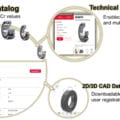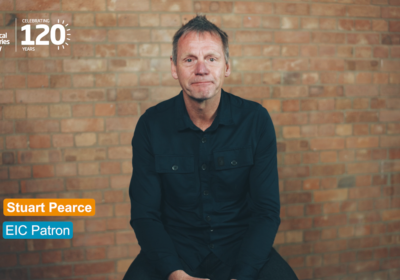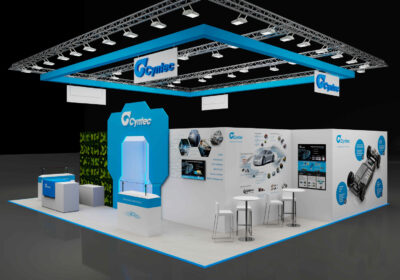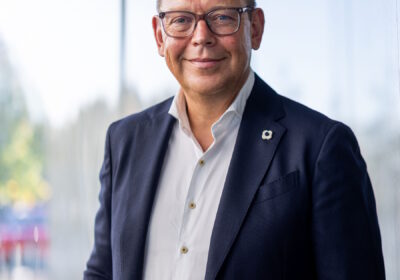The momentum behind sustainability and shifts in consumer behaviour continues to have profound implications for the packaging industry.
In an increasingly competitive business environment, growing demand for sustainable packaging presents a unique opportunity for brands to differentiate themselves. There is a growing realisation that sustainable packaging, despite short-term cost increases, represents a commercial opportunity and a chance to help the planet.
Recent research by Bain’s Global Consumer Lab, which surveyed 23,000 global consumers, revealed that 50% said sustainability was one of their top four purchase criteria when shopping. In terms of paying more for sustainable products, the same research suggested consumers were willing to pay an average premium of 12%.
So, with a greener way of working now presented as a more compelling business case, and the minds of consumers a little easier to decode, we are seeing a wave of innovation in packaging solutions that minimise environmental impact.
“There have been some major shifts from 10 years ago to today,” opined packaging expert Cory Connors. “What I’m seeing in this recent shift is the idea’s fruition, meaning people were talking about it last year, and this year they’ve done it and are showing it. They’re saying, here’s what I told you about last year. I think that’s incredibly valuable to hear because there were a lot of ideas, and now it’s a lot of actual production, not just concepts, but production for mostly sustainable packaging.”
It’s no secret that the past few years have created seismic changes across all industries. And as it becomes an increasingly pressing issue, the demands and expectations placed on businesses are inevitably rising. As for packaging’s role in future scenarios for the planet and catering to an increasingly eco-conscious consumer base, everything is up for discussion, and anything is possible.
“Consumers are being shown what to do, and they’re getting more sustainable choices to make better decisions,” he added. “But then they’re being shown how and what is recyclable, reusable, or compostable, and all of these things are necessary to a sustainable future.
“When I spoke to a venture capitalist, he said there have never been more startups in the packaging industry, which is incredible if you think about that. It’s 2024, and there are more startups today than ever. People are innovating. They’re developing these cool ideas, mostly in AI and sustainability. So, those two worlds, especially when they can come together, are making a huge impact on this industry.”

In a near-perfect example of how long-standing recycling problems will be resolved, Connors pointed to Pringles investing £86 million to move to 90% paper-based packaging. The original Pringles tube was launched in the 1960s, and the switch saw the steel base replaced with a paper one, meaning customers could put it straight in their home recycling bin.
“Things like the Pringles tube now being recyclable is amazing,” he added. “Think about how many Pringles tubes you have seen in your life. All of those are in the landfill. But from now on, they can be recycled. And that’s exciting. That’s a massive step in the right direction. These innovations in recyclable materials and recycling are incredible.” He went on to reference how AI technology is being used in material recycling facilities and, “is changing everything we do.
“I’m enjoying watching that process, and it’s an exciting time to be in this industry.”

Sustainable packaging is now a powerful tool, showcasing a brand’s environmental credentials while shaping consumer perceptions and purchases. It’s the first opportunity to show how important sustainability is to a brand, and users want to see recycled or recyclable materials. According to Connors, responsibility and opportunity are on offer in equal measure.
“Previously, it was just okay to just say it’s sustainable, made from paper and better for the environment,” Connors continued. “But that’s not the case anymore. You have to show it. There has to be a life cycle analysis, and companies are realising that. There’s going to be pushback. Customers will say, ‘I need you to show me the numbers on this material. Is it more sustainable, or are you just saying it is?’ That is the best part of this whole thing; you’ll see sustainable packaging moving forward.”
End users are also expected to pair creative designs with more sustainable materials. To use the new Pringles tube as an example, owners Kellanova have bolstered their sustainability credentials, and yet the packaging has been rigorously tested to ensure it protects its contents and keeps them fresh for 15 months, just like the old can.

“There’s a lot of uncertainty when a project starts, and then there’s a lot of excitement when progress is made,” added Connors. “People are generally overwhelmed by the success when it comes to fruition because it’s possible now. We can make packaging that’s made from 100% post-consumer recycled material. We can make something custom fit to save the company money and be more sustainable.
“They are excited to be the first. They want to be ahead of the pack. They want to try something different before anybody else to get the press they can get. They can show their customers that they’re trying.
“Brands are seeing sales increase with sustainable packaging and are thankful to the younger generations for being leaders in purchasing those products that are more sustainable. And I think we’ll continue to see that trend go up.”
Without a crystal ball, it’s difficult to know precisely which solutions consumers, brands, and policymakers will prefer in the future. Still, if you’re not actively investing in your sustainability performance and reducing the environmental impact of your packaging, you are out of the race, according to Connors.
“Packaging has been around for hundreds of thousands of years,” he added. “If you look back to antiquity, we’re just now getting started on truly sustainable packaging.
“You’re going to see 100% post-consumer recycled material more and more in every kind of material. We’re also going to see a local recycling facility that can truly sort and recycle that material again, so the circular economy will continue to grow and improve.
“I watch my kids, who are eight and 11 years old, make decisions based on sustainable packaging. They’ll even come up to me and say, ‘Dad, is this one a better option than this one?’ Of course, they have a unique situation with me as their dad, always discussing sustainable packaging. But I think younger generations are considering packaging before they purchase it.”

Speaking directly from the show floor of Paris Packaging Week 2024 earlier this year, Connors was able to see just how sustainability spans every stage of a product’s life cycle, from raw materials, design and production, to distribution, consumption and waste management. This will be similarly represented at London Packaging Week 2024, taking place 11 & 12 September at ExCeL.
Connors will moderate a discussion on the Luxury Stage on the topic of ‘Sustainable Elegance: Meeting eco-conscious consumer expectations’ at 12:45 pm – 1:30pm on Wednesday, September 11.
“You have all been innovating longer than us in America, and we’re very aware of that. And so, we’re here to learn. And I think what happens when people come to America is they see the same thing. They see different focuses of attention and different innovations. So, Americans coming to Europe are often blown away.
“I think there’s going to be exponential growth [in sustainable packaging]. With the onset of AI technology, I think you’ll see incredible innovations. How can you use that to design packaging? How can you use it throughout the whole scope of your packaging project? And I think we’re just scratching the surface with AI and new technology.”







